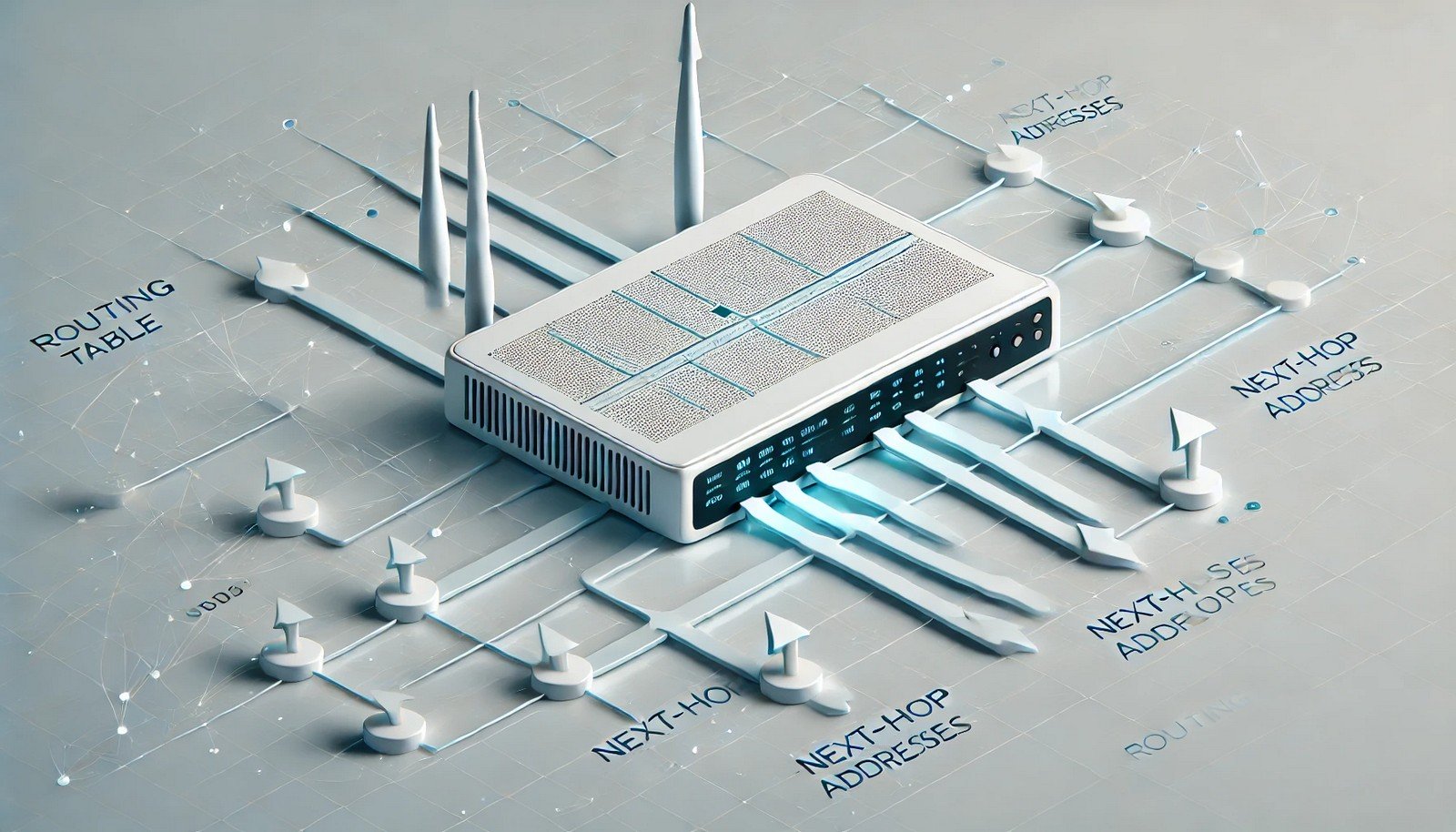Routing Table
 (Representational Image | Source: Dall-E)
(Representational Image | Source: Dall-E)
Quick Navigation:
- Routing Table Definition
- Routing Table Explained Easy
- Routing Table Origin
- Routing Table Etymology
- Routing Table Usage Trends
- Routing Table Usage
- Routing Table Examples in Context
- Routing Table FAQ
- Routing Table Related Words
Routing Table Definition
A routing table is a data structure used in computer networks to determine the best path for forwarding packets to their destination. It contains information about network destinations, available routes, and next-hop addresses. Routing tables are maintained by routers and hosts and are critical for efficient data transmission in both local and wide-area networks. They may include static or dynamic routes, with the latter being updated through routing protocols like OSPF, BGP, and RIP.
Routing Table Explained Easy
Imagine you’re on a road trip and need directions. A GPS tells you which roads to take to reach your destination quickly. A routing table works the same way but for the internet—it helps data packets find the fastest route to reach the correct computer or server. Without a routing table, the internet would be like a maze with no signs!
Routing Table Origin
The concept of routing tables emerged in the early days of computer networking as a way to manage packet forwarding. As networks grew in size and complexity, the need for automated route management became essential, leading to the development of dynamic routing protocols in the late 20th century.
Routing Table Etymology
The term "routing" comes from "route," meaning a path or way taken. "Table" refers to the structured format used to store and manage routing information.
Routing Table Usage Trends
With the rise of the internet and large-scale networks, routing tables have become more sophisticated. Advances in machine learning and software-defined networking (SDN) have enabled dynamic and adaptive routing techniques, optimizing performance and security.
Routing Table Usage
- Formal/Technical Tagging:
- Networking
- Computer Science
- Internet Infrastructure - Typical Collocations:
- "IP routing table"
- "dynamic routing"
- "static routing configuration"
- "routing table update"
Routing Table Examples in Context
- A router checks its routing table before forwarding a packet to determine the best path.
- Dynamic routing protocols like BGP continuously update routing tables to reflect changes in network topology.
- In enterprise networks, administrators configure static routing tables for security and stability.
Routing Table FAQ
- What is a routing table?
A routing table is a database used by routers to determine where to forward network packets. - How does a routing table work?
It stores information about network destinations and uses algorithms to find the best path for data transmission. - What is the difference between static and dynamic routing?
Static routing is manually configured, while dynamic routing updates automatically using protocols like OSPF and BGP. - Why is a routing table important?
Without it, data packets wouldn’t know where to go, leading to communication failures in networks. - What is the difference between a routing table and an ARP table?
A routing table determines the path to a network destination, while an ARP table maps IP addresses to MAC addresses. - Can a routing table be updated?
Yes, dynamic routing protocols update routing tables automatically, while static entries must be manually changed. - What happens if a routing table is misconfigured?
It can lead to network outages, inefficient routing, or security vulnerabilities. - How large can a routing table get?
Internet backbone routers handle routing tables with hundreds of thousands of entries. - What are default routes in a routing table?
A default route is a fallback path used when no specific route is found in the table. - How do you view a routing table?
In Windows, useroute print; in Linux, usenetstat -rnorip route show.
Routing Table Related Words
- Categories/Topics:
- Network Routing
- IP Networking
- Computer Communications
Did you know?
The Border Gateway Protocol (BGP), which manages routing tables on the global internet, was once hijacked in a cyberattack that rerouted traffic through malicious networks. This incident highlighted the importance of secure and well-maintained routing tables in modern networking.
PicDictionary.com is an online dictionary in pictures. If you have questions or suggestions, please reach out to us on WhatsApp or Twitter.Authors | Arjun Vishnu | @ArjunAndVishnu

I am Vishnu. I like AI, Linux, Single Board Computers, and Cloud Computing. I create the web & video content, and I also write for popular websites.
My younger brother, Arjun handles image & video editing. Together, we run a YouTube Channel that's focused on reviewing gadgets and explaining technology.



Comments powered by CComment